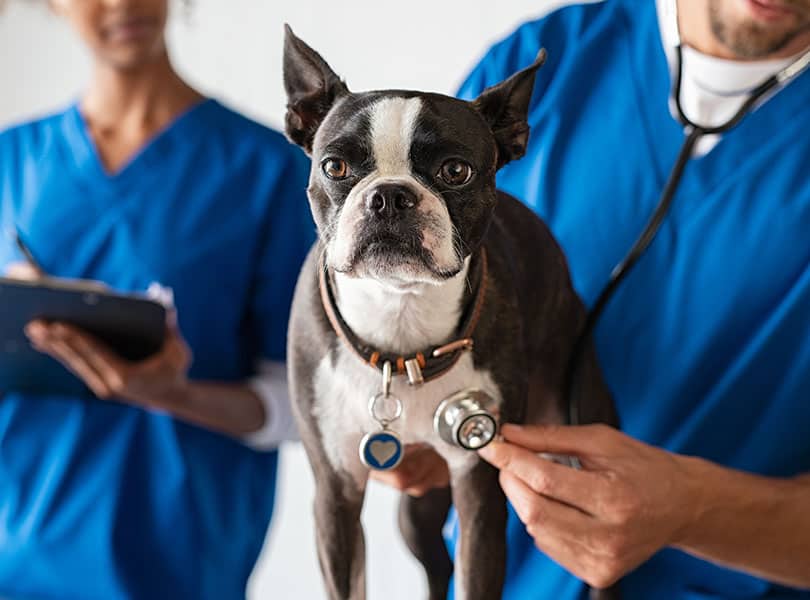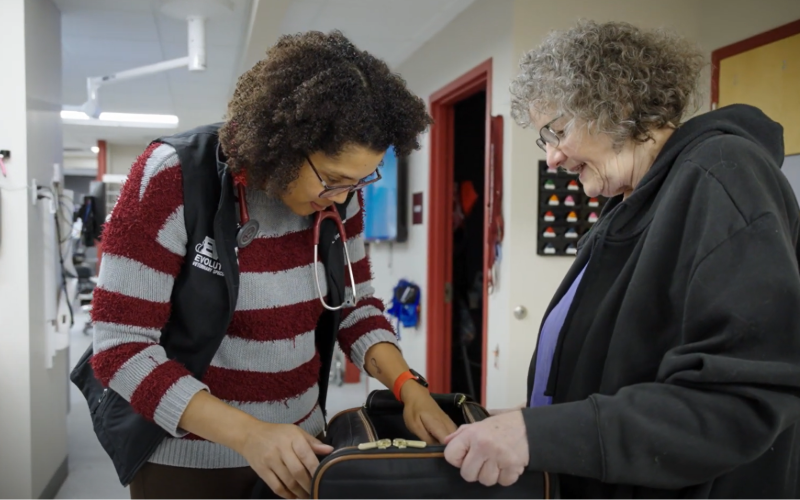Things to Know Before Visiting a Board Certified Veterinary Cardiologist}
Wiki Article
What You Required to Learn About Vet Solutions: An Introduction of Diagnostic Equipments and Procedures
Vet solutions play a vital function in preserving the health of family pets. Normal exams can expose surprise health and wellness worries beforehand. Different diagnostic devices and procedures, such as blood tests and imaging techniques, supply necessary insights right into an animal's well-being. Comprehending these approaches is key for family pet owners. What specific analysis treatments are most commonly made use of, and just how can they impact an animal's therapy strategy?Relevance of Routine Veterinary Exams
While several family pet owners may ignore the relevance of regular veterinary examinations, these appointments are necessary for keeping an animal's general health. Routine brows through to the vet enable early discovery of prospective health problems before they rise right into severe problems. Routine examinations frequently consist of vaccinations, which are vital for protecting against infectious diseases that could drastically affect a pet's health. In addition, these appointments give a chance for veterinarians to assess the animal's weight, dental wellness, and total condition, ensuring that the pet is prospering. Throughout these check outs, animal owners can also receive important suggestions on diet plan, exercise, and precautionary care tailored to their details pet dog's requirements.Common Analysis Procedures in Vet Medicine
In vet medicine, precise medical diagnosis is essential for reliable therapy. Typical diagnostic treatments consist of blood testing strategies, advanced imaging innovations, and urinalysis, each playing a substantial role in determining health issues. Recognizing these methods improves the ability to provide ideal take care of animal clients.Blood Checking Techniques
Blood screening strategies work as crucial analysis devices in vet medicine, allowing vets to evaluate the health of animals precisely. These strategies include accumulating blood samples to evaluate different elements, such as red and white blood cells, platelets, and biochemical markers. Typical examinations consist of total blood matters (CBC), which evaluate total wellness and detect infections, and biochemical panels, which evaluate body organ function and metabolic condition. Furthermore, serological tests can determine details diseases through antibody detection. Blood testing is minimally invasive and offers vital details that assists in identifying problems, checking health and wellness standing, and assessing actions to therapies. Overall, these techniques play a vital function in making certain perfect look after pets and livestock alike.Imaging Technologies Used
Analysis imaging technologies are necessary tools in vet medication, matching blood testing methods by offering visual understandings into an animal's interior structures. Common imaging modalities include X-rays, which work for evaluating bone cracks and discovering international things, and ultrasound, which allows for real-time visualization of soft cells and body organs. Magnetic vibration imaging (MRI) offers detailed images of complex anatomical areas, particularly in neurological analyses. Computed tomography (CT) provides cross-sectional images, enhancing diagnostic accuracy for numerous problems. Each of these innovations help veterinarians in identifying health problems, planning therapies, and checking recovery. By incorporating imaging modern technologies, veterinary specialists can better analyze an animal's health and wellness and make notified decisions regarding their treatment.
Urinalysis and Diagnostics
Urinalysis functions as a vital analysis tool in veterinary medicine, providing beneficial understandings right into an animal's general health and wellness and aiding in the discovery of various conditions. This non-invasive procedure analyzes pee samples to analyze kidney feature, hydration status, and metabolic disorders. Typical components analyzed consist of specific gravity, pH levels, glucose, proteins, and the presence of blood or bacteria. Unusual findings can show issues such as urinary tract infections, diabetic issues mellitus, or kidney condition. To improve diagnostic precision, urinalysis is commonly done along with other examinations, such as blood work and imaging researches. Early detection through urinalysis can bring about prompt treatments, enhancing the diagnosis for lots of veterinary clients. It is a necessary aspect of thorough veterinary treatment.Understanding Blood Tests and Research Laboratory Analysis
Recognizing blood tests and research laboratory analysis is essential in vet medication as it helps in identifying various health problems in pets. Different kinds of blood examinations provide important information about a pet's internal state, while analyzing lab results needs careful consideration of numerous aspects. This section will certainly discover the types of blood examinations readily available and the significance of their outcomes.Types of Blood Examinations
Blood examinations play a vital function in veterinary medication, supplying vital insights right into an animal's health and wellness condition. Various types of blood tests are made use of, each offering different objectives. Complete blood counts (CBC) analyze general wellness and discover problems such as anemia or infection. Biochemical profiles assess body organ feature by determining electrolytes and enzymes, offering insights right into metabolic health and wellness. Serological examinations identify specific antibodies or pathogens, assisting in the medical diagnosis of infections or autoimmune illness. Blood keying assurances secure transfusions, while coagulation examinations gauge the blood's capability to clot, crucial for medical procedures. These examinations collectively enhance medical diagnosis, therapy preparation, and monitoring of an animal's wellness, illustrating the relevance of detailed laboratory evaluation in vet treatment.
Analyzing Lab Outcomes
A thorough evaluation of laboratory outcomes is essential for precise medical diagnosis and therapy in veterinary medicine. Interpreting laboratory results requires an understanding of regular recommendation arrays and the value of variances. Blood examinations can disclose different wellness indicators, such as body organ feature, electrolyte balance, and the presence of infections. Veterinarians have to consider the entire professional image, including the animal's history, physical assessment findings, and any kind of signs provided. Variants in outcomes may develop from aspects such as age, breed, and underlying health problems. Consequently, lab results should not be watched alone yet instead as part of an all-encompassing analysis method. Precise interpretation enables tailored treatment plans and far better end results for vet people.Imaging Techniques: X-rays, Ultrasounds, and Beyond
Imaging strategies are vital devices in veterinary medicine, giving vital insights right into the health and wellness and well-being of animals. Amongst the most commonly made use of methods are X-rays and ultrasounds. X-rays are indispensable for imagining bone frameworks, aiding veterinarians determine fractures, growths, or international items. This approach is fast and non-invasive, making it excellent for immediate situations.Ultrasounds, on the other hand, use sound waves to develop pictures of soft tissues and organs. This technique is particularly useful for analyzing the heart, abdomen, and reproductive organs, permitting veterinarians to evaluate conditions like fluid buildup or body organ abnormalities.Beyond X-rays and ultrasounds, progressed imaging techniques such as computed tomography (CT) and magnetic resonance imaging (MRI) are increasingly used in vet practice. These approaches supply comprehensive cross-sectional pictures, improving the accuracy of diagnoses and therapy strategies. CT Scans For Animals. In general, have a peek at this website imaging strategies play a crucial duty in making sure reliable veterinary careThe Function of Biopsies in Diagnosing Family Pet Health Issues
Accuracy in diagnosing wellness issues in pet dogs frequently hinges on using biopsies, which provide clear-cut details regarding cells irregularities. A biopsy entails the removal of a tiny sample of tissue for assessment under a microscopic lense, permitting vets to determine various conditions, including infections, growths, and inflammatory conditions. This analysis tool is necessary for comparing benign and malignant developments, leading treatment decisions, and examining the severity of a condition.Biopsies can be carried out making use of different techniques, such as needle aspiration, incisional biopsies, or excisional biopsies, relying on the location and kind of cells involved. The selection of approach might influence recuperation time and the quantity of tissue accumulated. Eventually, the information obtained from a biopsy can result in targeted treatments, boosting outcomes for animals dealing with major wellness difficulties. Veterinarians emphasize the importance of this procedure in attaining accurate diagnoses and efficient treatment plans.Advanced Diagnostic Equipment: Endoscopy and CT Scans

Advanced diagnostic tools, such as endoscopy and CT scans, play a vital role in contemporary veterinary medicine, supplying non-invasive methods to visualize interior frameworks and detect numerous problems in pets. Endoscopy involves using an adaptable tube geared up with a camera, permitting veterinarians to examine the stomach system and respiratory system directly. This technique can disclose irregularities such as growths, international bodies, or swelling, allowing targeted treatment plans.CT scans, on the other hand, make use of sophisticated imaging innovation to produce detailed cross-sectional pictures of the body (CT Scans For Animals). This method is particularly helpful for examining facility frameworks like the mind, back, and joints. By supplying high-resolution images, CT scans assist vets click this in recognizing issues that may not be evident through standard radiography. With each other, these innovative devices improve diagnostic precision, improve treatment outcomes, and inevitably add to much better total animal wellness monitoring

Interpreting Examination Outcomes: What Pet Dog Owners Must Know
Recognizing examination outcomes can be a tough task for pet owners, especially after advanced procedures like endoscopy and CT scans have actually been executed. Analyzing these outcomes calls for a grasp of clinical terminology and a clear understanding of what the searchings for indicate concerning the animal's health. Vets often give descriptions, however the intricacy of the results can still bring about confusion.Pet proprietors should actively participate in conversations with their veterinarians, asking concerns to make clear any type of uncertainties. It is necessary to comprehend abnormal versus regular results and the effects for the pet's therapy strategy. Furthermore, acknowledging that some results might need more testing or monitoring can aid owners stay notified concerning their pet's wellness trip. Inevitably, a collaborative technique between pet owners and vet experts fosters better wellness results and boosts the general treatment experience for pets.Often Asked Inquiries
How Do I Choose the Right Veterinary Center for My Animal?
Picking the best veterinary facility involves looking into regional choices, assessing certifications, visiting centers, and assessing personnel interactions (Cancer Veterinary Near Me). Prioritizing recommendations from relied on sources can help ensure the best care and environment for an animal's wellness demandsWhat Should I Do if My Pet Declines to head to the Vet?
When an animal rejects to visit the vet, it's recommended to stay calm, use deals with or playthings to tempt them, and consider scheduling a home see if anxiousness lingers. Perseverance and positive reinforcement are essential.Are There Telehealth Options for Vet Providers?
Telehealth choices right here for vet solutions are increasingly readily available, allowing family pet owners to seek advice from veterinarians from another location. These solutions enable discussions regarding health problems, recommendations on minor ailments, and follow-ups without requiring to check out a clinic.
Just how Typically Should My Family Pet Have Oral Check-Ups?
The frequency of oral check-ups for animals usually depends on their age and type. Usually, veterinarians advise yearly oral analyses, although some family pets might need even more constant visits to maintain excellent oral health and wellness.
What Are the Costs Connected With Vet Diagnostics?
The prices related to vet diagnostics can vary commonly, typically varying from fundamental tests like blood work to sophisticated imaging methods. Elements affecting costs consist of the center's location, equipment made use of, and particular examinations required for each pet dog. Veterinary services play a crucial duty in maintaining the wellness of family pets. While many pet proprietors might underestimate the significance of routine veterinary examinations, these appointments are important for keeping a pet's general health. Additionally, these appointments offer an opportunity for veterinarians to examine the pet's weight, dental wellness, and total problem, guaranteeing that the animal is thriving. Accuracy in detecting health concerns in pets frequently pivots on the use of biopsies, which give conclusive details concerning tissue abnormalities. Additionally, recognizing that some outcomes may call for further testing or surveillance can aid proprietors remain informed regarding their pet's health and wellness journey.Report this wiki page